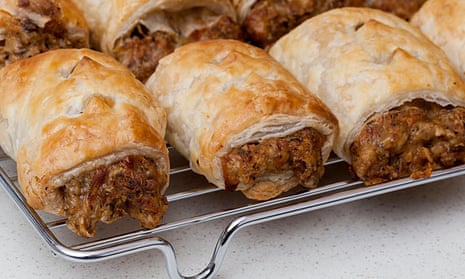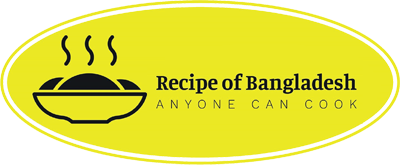Have you ever found yourself staring at leftover sausages in the fridge, pondering whether you can eat them cold the next day? You’re not alone.
This simple question often leaves many of us puzzled and hesitant. After all, no one wants to risk their health over a tasty snack. Imagine a world where you could enjoy your favorite cooked sausages without worrying about reheating them.
Yes, it’s possible, and you’re about to discover the secrets that can make it happen safely. We’ll unravel the mystery of eating cold sausages and provide you with crucial tips to savor these treats without a second thought. Curious? Let’s dive in and put your mind at ease.
Safety Of Eating Cold Cooked Sausages
Eating cold cooked sausages is often a convenient choice. But, is it safe? Understanding the safety of consuming cold sausages is important. This guide explores key considerations to ensure your health is not compromised.
Storage Conditions Matter
Proper storage is crucial for safety. Refrigerate cooked sausages promptly. Store them in an airtight container. This prevents bacterial growth. Ensure your fridge temperature is below 40°F (4°C).
Check Before Eating
Always inspect the sausages before eating. Look for changes in color or texture. Smell them to detect any off odors. These are signs of spoilage. If anything seems off, discard them.
Timeframe For Consumption
Eat cold sausages within a safe timeframe. Consume them within three days. This reduces the risk of foodborne illnesses. After three days, bacteria may multiply.
High-risk Individuals
Some people should avoid eating cold sausages. Pregnant women, elderly, and young children are high-risk groups. Their immune systems are more vulnerable. Consult a healthcare provider if unsure.
Benefits Of Reheating
Reheating sausages can kill harmful bacteria. Use a microwave or stovetop. Heat them evenly to at least 165°F (74°C). This ensures safety and freshness.
Enjoying Cold Sausages
Cold sausages can be a tasty addition. Pair them with fresh salads or sandwiches. Make sure they’re safe to eat first. Enjoy them with confidence.
Proper Storage Techniques
Proper storage ensures cooked sausages remain safe to eat cold the next day. Refrigerate them within two hours of cooking. Store in airtight containers to maintain freshness and prevent contamination.
Proper storage techniques ensure your cooked sausages stay fresh and safe. Preserving their taste and quality is crucial. Knowing how to store them correctly can save you from foodborne illnesses. Proper storage also helps maintain the sausages’ flavor and texture for later enjoyment.
Refrigeration Guidelines
Place cooked sausages in the fridge within two hours. This prevents bacteria growth. Keep your fridge temperature at or below 40°F (4°C). This ensures a safe environment for your food. Always store sausages on a clean plate or tray. This prevents juices from contaminating other foods. Don’t stack other items on top. Let air circulate for even cooling.
Storage Containers
Use airtight containers for storing cooked sausages. This keeps them fresh longer. You can also wrap them tightly in plastic or aluminum foil. This helps lock in moisture and flavor. Label containers with the date of storage. This helps you track their freshness. Always ensure the containers are clean and dry. This prevents the growth of harmful bacteria.
Signs Of Spoilage
Check for slimy texture, bad odor, or off-color. These are signs that cooked sausages might have spoiled. Eating them cold the next day could be unsafe if these spoilage signs are present.
When it comes to eating cooked sausages cold the next day, knowing how to identify spoilage is crucial. Nobody wants a case of food poisoning from a seemingly harmless snack. Understanding the signs of spoilage helps you make informed decisions, ensuring your meals are both safe and tasty.
Visual Indicators
Start by examining your sausage’s appearance. Look for any discoloration or mold on the surface. A grayish or slimy texture often indicates that it’s time to toss it. Trust your eyes; if it doesn’t look right, it’s likely not safe to eat.
Odor And Texture Changes
Next, give your sausage a sniff test. A sour or off smell is a strong sign that it’s past its prime. Fresh sausages should smell like they did when you first cooked them, not like they’ve been sitting in the fridge for too long. Pay attention to texture as well. If the sausage feels sticky or unusually soft, these are red flags.
They indicate bacterial growth, which could make you sick. A simple touch can be a life-saver. Remember that your senses are your first line of defense against spoiled food. Would you eat something that doesn’t pass the smell test? Probably not, and for good reason. Always trust your instincts. They are often right when it comes to food safety.

Credit: www.bbcgoodfood.com
Reheating Versus Eating Cold
Eating cooked sausages cold the next day is safe if stored properly. Ensure refrigeration within two hours after cooking. Always check for any unusual smell or texture before consuming to ensure freshness.
When you have cooked sausages left over from a delicious barbecue or family dinner, you might wonder if it’s better to reheat them or enjoy them cold the next day. Both methods have their merits and drawbacks, and your choice might depend on the situation or your personal preference. Let’s delve into the pros and cons of reheating versus eating sausages cold, and how you can make the most of your leftovers.
Pros And Cons Of Reheating
Reheating cooked sausages can bring back their warm, juicy essence, making them taste just like they did fresh off the grill. You can easily reheat them in the microwave, on the stovetop, or even in an oven.
However, there’s a risk of overcooking, which might leave them dry and less appetizing. There’s also the issue of time. Reheating adds an extra step to your meal prep, which might not be ideal if you’re in a hurry. You also need to ensure sausages reach a safe temperature to prevent any foodborne illnesses.
Best Practices For Cold Consumption
Eating sausages cold can save you time and offers convenience, especially for a quick snack or lunch on the go. Cold sausages can be added to salads, sandwiches, or enjoyed on their own with a dipping sauce for an exciting flavor twist. Make sure your sausages are stored properly in the fridge to maintain freshness. Consume them within a day or two to ensure they are still good to eat.
Consider the taste and texture. Some may find cold sausages a bit chewy, while others might enjoy the different mouthfeel. Have you ever tried pairing them with a tangy mustard or a slice of cheese? It might change your perspective! Ultimately, the choice between reheating and eating cold sausages depends on your taste preference and time constraints. What do you think you’ll try next time?
Health Considerations
Eating cooked sausages cold the next day is generally safe if stored properly. Keep them in the refrigerator within two hours of cooking. Ensure they’re consumed within three days to avoid bacteria growth.
Eating cooked sausages cold the next day brings health considerations. Understanding these is crucial for safety. Sausages are popular, but can pose risks. Proper handling and storage are vital.
Foodborne Illness Risks
Cold cooked sausages can harbor harmful bacteria. These include Salmonella and E. coli. Bacteria multiply quickly at room temperature. Consuming contaminated sausages can lead to food poisoning. Symptoms may include nausea, vomiting, and diarrhea. Proper refrigeration reduces these risks. Keep sausages below 40°F to prevent bacterial growth.
Vulnerable Populations
Certain groups face higher risks from cold sausages. Pregnant women should be cautious. Their immune systems are more susceptible. Children are also vulnerable. Their bodies react strongly to foodborne illnesses. Elderly individuals may experience severe symptoms. Weak immune systems make them more prone to infections. Always ensure proper storage for safety.

Credit: www.ebay.com
Tips For Safe Consumption
Eating cooked sausages cold the next day is common. Follow some tips to ensure safe consumption. These tips help prevent any health issues and enhance your dining experience. Keeping safety in mind is crucial for enjoying leftovers.
Checking Expiry Dates
Always check the sausage’s expiry date. This ensures they are still safe to eat. Expired sausages may cause food poisoning. Don’t consume sausages past their expiry date. Store them properly to maintain freshness. Proper storage extends their shelf life.
Using Condiments Safely
Condiments add flavor to cold sausages. Ensure they are fresh and not expired. Check the expiry date of ketchup, mustard, or mayonnaise. Store condiments in the fridge after opening. This keeps them safe for consumption. Use clean utensils when handling condiments.
Expert Advice
Many wonder about eating cooked sausages cold the next day. Expert advice sheds light on this common query. Understanding food safety and nutritional considerations is essential.
Food Safety Experts
Food safety experts advise caution. Sausages must be stored correctly. Keep them in the fridge after cooking. This prevents bacteria growth. Cold sausages should be eaten within two days. Always check for signs of spoilage. Any odd smell or color means it’s unsafe to eat.
Refrigeration is key. It stops harmful bacteria. Wrap the sausages tightly. Use an airtight container. This maintains freshness. Follow these tips to stay safe.
Nutritionists’ Recommendations
Nutritionists focus on preserving nutrients. Cold sausages can be nutritious. Eating them cold is fine. If stored properly. They retain protein and flavor. Avoid reheating multiple times. It reduces nutritional value. Cold sausages can be part of a balanced diet.
Pair them with fresh vegetables. This boosts nutritional intake. Enjoying them cold can be healthy. When done correctly. A little planning can ensure a safe and nutritious meal.

Credit: www.theguardian.com
Frequently Asked Questions
Can I Eat Cooked Sausages The Next Day?
Yes, you can eat cooked sausages the next day. Store them in the refrigerator within two hours of cooking. Ensure they are properly reheated before consuming to maintain safety and flavor. Consuming stored sausages promptly ensures optimal taste and freshness.
Can I Eat Fully Cooked Sausage Cold?
Yes, you can eat fully cooked sausage cold. It is safe if stored properly in the refrigerator. Always check for any changes in smell or texture before consuming. Enjoy it as a quick snack or in salads.
Can You Eat Sausages Without Reheating?
Yes, you can eat fully cooked sausages without reheating them. Ensure they are stored properly in the fridge. Always check the packaging for specific instructions and consume before the expiration date for safety.
What To Do With Leftover Cooked Sausages?
Store leftover cooked sausages in an airtight container in the fridge for up to three days. Reheat them thoroughly before eating. Slice and add them to pasta, salads, or pizzas for a quick meal. Use them in sandwiches or wraps for a tasty, convenient lunch option.
Final Words
Eating cooked sausages cold is generally safe. Always store them properly in the fridge. Check for any unusual smell or appearance before eating. Trust your senses. If in doubt, reheat them. Cold sausages can be a quick snack. Or part of a salad or sandwich.
Sausages offer convenience and taste, whether hot or cold. Enjoy them with your preferred condiments. Always prioritize food safety. This ensures a delightful and healthy eating experience. Keep these tips in mind for your next meal. Stay safe and enjoy your food!

Leave a Reply